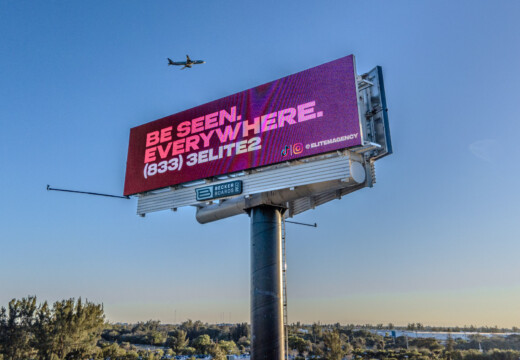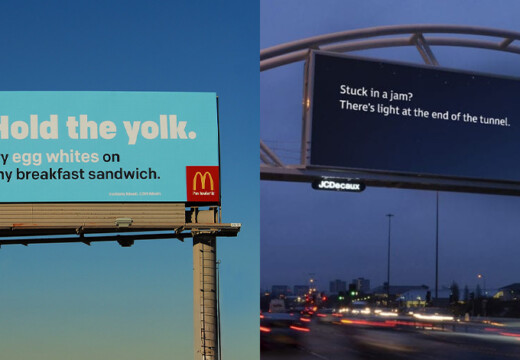In an overcrowded market, trust and awareness are crucial—but you won’t build them by focusing only on the bottom of your funnel. You need a layered approach.
The marketing funnel has started to look more like a maze.
Prospects want to interact with you dozens of times before they trust you enough to make a purchase. Education and brand awareness are becoming bigger differentiators as consumers have more options. And even bottom-of-the funnel platforms, like an Amazon product page, are being used for information-gathering, not just checkout.
“How many times do you go to Amazon to look at a product? A lot, right?” asks RJ Schultz, COO at Blip and former marketplace ops manager at Amazon. “And you aren’t just looking at prices and sellers. You’re looking at reviews, because you want to educate yourself. You want to find validation that people like you feel they made the right choice.”
How can you give customers the touchpoints they need, while still standing out from the crowd?
Simply cranking out more digital advertising won’t be enough to reach them—because all your competitors have had the same idea.
“In the race for digital efficacy, everyone is trying to maximize their return on ad spend through Google and Meta, and that area is becoming increasingly saturated,” says RJ. “We’re going to see the pendulum swing to the other side, toward brand awareness and multi-channel trust building.”
The key to standing out lies in a “smart marketing” approach that blends multiple channels to build genuine trust.
As digital marketing gets more expensive and more saturated, companies that invest in building awareness and familiarity through a mix of marketing channels will have a huge advantage over competitors duking it out over bottom-of-the-funnel tactics alone.
The Problem Today: Optimizing for What’s Measurable, Not What Works
The marketing industry has become obsessed with attribution and direct response metrics like click-through rates, cost-per-click, and conversion tracking pixels.
This has caused leaders to dramatically under-invest in awareness campaigns, which have a significant but less explicitly measurable impact on sales.
Here’s an uncomfortable truth: What’s easy to measure and what actually builds customer trust are often two completely different things.
“You can’t track sales from out-of-home channels as literally as you can track sales from Facebook ads,” says RJ. “When we measure billboard campaigns, we aren’t looking at sales. We’re looking at reach (impressions) and frequency, to understand how much you’ve penetrated a specific market.”
Overly narrow, literal focus on attribution metrics is causing companies to miss the fundamental psychology of how customers actually make purchasing decisions. When you only focus on last-touch attribution, you can easily miss out on creating the awareness and trust required to make customers convert.
The ABCs of Smart Marketing: Setting Up Your Marketing Engine
“Smart marketing” means aligning the right medium with the right moment in the customer journey. There’s a mix of channels—billboards, social media, emails, content hubs—that you can choose from to create audience touchpoints. Which ones you focus on depends on your unique customer journey.
What does smart marketing look like in practice? It’s as easy as A, B, C:
- Awareness-first channel prioritization: Build a foundation of brand awareness early in the customer journey
- Balanced multi-channel approach: Leverage a mix of channels to create a cohesive, comprehensive brand experience
- Constant tests and refinement: Continuously iterate based on performance data to optimize campaigns and maximize your ROI
Awareness-first channel prioritization
Companies with bottom-funnel tunnel vision forget that brand awareness is the first step to conversions. (It’s like asking someone to marry you on the first date—you’re skipping the whole “getting to know each other” part.)
“The future of marketing is going to need to look higher up the funnel in order to be effective,” says RJ.
Start by building authoritative awareness channels, which create psychological credibility over time. Laying this foundation enhances downstream marketing efforts, setting your prospects up to have positive associations when they encounter your brand in other channels down the road.
“Billboards are best for building awareness, for a couple of reasons,” says RJ. “For one thing, they’re authoritative. People driving down the freeway or walking through the city generally don’t know how to get on a billboard themselves. They associate the format with legitimate companies, because there’s a perceived barrier to entry.”
As a bonus, you know that everyone that sees a billboard is a real human—unlike digital channels, where bots may be padding your performance stats.
When you focus on building awareness with a channel like OOH, you give all your other marketing efforts a leg up.
Balanced multi-channel approach
Once you’ve established your baseline awareness campaigns, bring in other marketing channels to create a more comprehensive brand experience that feels natural, rather than pushy.
“You can’t build trust on a monorail,” says RJ. “If you focus too much on one medium, you can build ad fatigue. People don’t want to see you 10 times a day on their Facebook feed; that’s slimy. A mix of channels is crucial to develop people on the customer journey.”
For example, your OOH campaigns can prime audiences to be more receptive to digital ads, because they’ve seen you before.
“With billboards, even if you aren’t focusing on the ads, you’re still ingesting logos, colors, and copy,” says RJ. “So, when that same ad surfaces on your phone, your brain recognizes it and takes an extra second to evaluate.”
Multi-channel marketing works because it triggers subconscious recognition patterns. When prospects encounter familiar brands across different contexts, their brains automatically pay more attention, creating exponential improvements in conversion rates down the line.
Constant tests and refinement
Once you’ve established your marketing mix, your strategy is a matter of constant refinement and metrics tracking. Real-time campaign data—and real-time control over what channels you turn on and off—allows you to optimize quickly based on performance.
RJ recommends split testing creative and messaging across different markets, geographies, and platforms.
“It’s important to be able to make adjustments and run tests in real time,” he adds. “At Blip, we don’t want marketers to have to sign a months-long, millions-of-dollars contract with a board owner and get locked into timelines and locations. Instead, we let them continuously change the locations, creative, frequency, and timing of their ads.” Those constant refinements are what makes for marketing success over the long term, not just for a moment.
Smart marketing in action
When all the pieces come together, a smart marketing strategy looks like this:
- You layer trust-building content after awareness is established, offering educational content for your prospects to dig deeper
- You deploy conversion tactics only after prospects have received sufficient conditioning and you’ve established baseline trust
- You focus on qualified impressions, tracking market saturation percentages rather than direct sales from awareness campaigns alone
The Future of Marketing
As the digital marketing landscape gets more crowded, consumers are feeling fatigued with digital ads, creating more opportunities to stand out with authoritative OOH channels.
“In this sharper elbowed environment, where it’s harder to win in the bottom of the funnel with things like Google and Meta ads, marketers are forced to look upstream,” says RJ. “They’re realizing that to increase ROI at the bottom of the funnel, they’ve got to pay a lot more attention to the top and middle.”
The winners will have a strategy that layers different marketing channels, building a system that is greater than the sum of its parts.
At the end of the day, as they navigate through seas of options, your prospects just want to know who you are and what you can do for them.
Your marketing strategy is the way you tell them just that. Choose your words and channels wisely.


